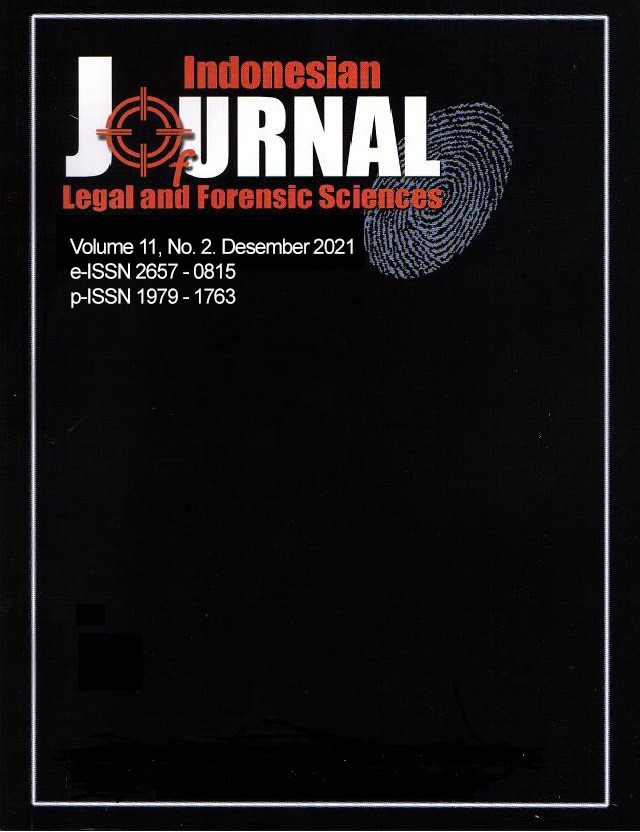Determination of Time of Death Based on Blood Ring Formation and RNA Degradation
Abstract
Time of death (TOD) determination is crucial in criminal cases. The method used to determine the TOD so far is only based on the state of the corpse found, therefore a new method is needed to improve the accuracy of the TOD determination. This study aims to determine the TOD based on a new method, namely the formation of blood rings and RNA degradation. Blood is commonly found in crime scenes. Blood consists of liquid part that is plasma and cellular part consisting of erythrocytes, leukocyte, and thrombocytes. The composition of blood as a liquid that contains dissolved solids makes the drops of dried blood forming “coffee ring effect”, which is a ring-like form on the perimeter of a blood drop. Coffee ring effect is used as an indicator of time by looking at the thickness of the ring formed from the perimeter of the blood drop to the middle which increases with time. RNA degradation was observed using Peptidylprolyl isomerase A (PPIA) gene. The PPIA gene is found in leukocyte and is used to see the degradation of RNA per 30 minutes period using the RT-PCR and qPCR methods. Degradation was observed by comparing the cycle threshold (ct) value of the standard curve with the ct value of the samples per unit time. TOD could be determined by the percentage of the blood ring thickness up until 120th minutes, and by observing the degradation of RNA until the 60th minute, after that the RNA had completely degraded.



















